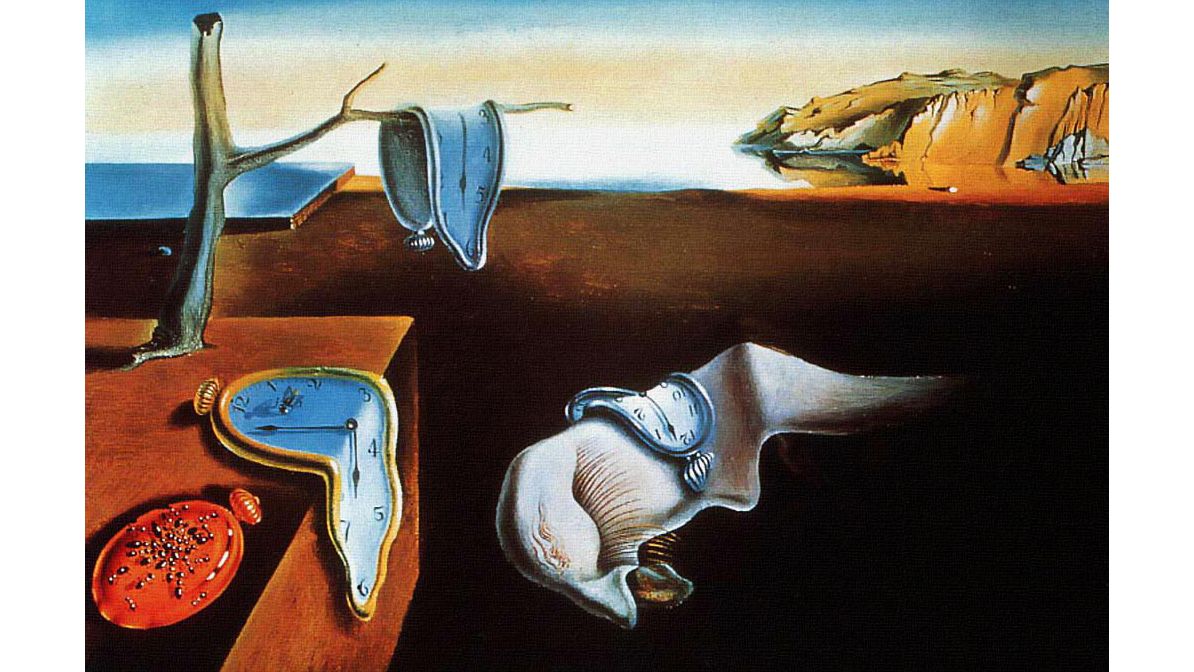Table Of Content

Despite its brief life, Art Nouveau would prove influential in the 1960s and '70s to designers wishing to break free of the confining, austere, impersonal, and increasingly minimal aesthetic that prevailed in the graphic arts. The free-flowing, uncontrolled linear qualities of Art Nouveau became an inspiration for artists such as Peter Max, whose evocation of a dreamy, psychedelic alternative experience recalls the imaginative, ephemeral, and free-flowing aesthetic world of the turn of the century. If Art Nouveau quickly took Europe by storm in the last five years of the 19th century, artists, designers and architects abandoned it just as quickly in the first decade of the 20th century. Although many of its practitioners had made the doctrine that "form should follow function" central to their ethos, some designers tended to be lavish in their use of decoration, and the style began to be criticized for being overly elaborate.
Overview of Light and Space
Although this might appear to be a simple continuation of a site-specific installation to the outdoors, the interaction between the viewer, installation and location increased exponentially. Irwin described these works as "Conditional Art," distinguishing it from site-specific works which artists create to fit within a defined area. The artist Alexander Calder created mobilesclosemobileA work of 'kinetic art' with parts that move as a result of natural effects, such as wind or flowing water, or mechanical means, such as motors. In art and design, organic shapes, forms or lines are imperfect as opposed to perfect geometric elements. Shapes suggests images from nature – flying birds, fluttering insects, gently spinning leaves.
Using Art and Design to Advance Movements for Liberation - Core77.com
Using Art and Design to Advance Movements for Liberation.
Posted: Thu, 29 Feb 2024 08:00:00 GMT [source]
Farnsworth House
At this time, German printers still generally favored Fraktur, a dramatic Gothic typeface designed in the 16th century for Albrecht Dürer's Triumphal Arch (1526) woodcut. By stripping out the ornamentation of German script, Bayer expressed the spirit of a new cultural movement that rejected backwards-looking nationalism and embraced cosmopolitan modernity, a movement spearheaded by the Bauhaus, and later snuffed out by the Nazis. His design was also intended to work within a classic Bauhaus compositional concept, wherein letters were arranged in diagonals lines thrusting upwards across the page, wrapping around objects and picked out in strong colors.
The World of Charles and Ray Eames
As a founding member of the Vienna Secession, he rejected the tenets of academic painting under which he had been trained. The shocking reactions that Klimt's work has provoked - during his lifetime up to the present day - helps contribute to his renown as the most innovative Art Nouveau painter and a master of modernism. This is the centerpiece of the new Darmstadt Artists Colony (Kunstlerkolonie), formed in 1899 under the patronage of Grand Duke Ernst Ludwig of Hesse, an admirer of the Arts & Crafts movement. Olbrich, one of the Colony's founding artists, whom the Duke poached from the Vienna Secession. (Olbrich had designed the Secession's exhibition building three years before.) Like the Secession building, the Ernst-Ludwig-Haus is highly rectilinear, with a gleaming white exterior capped by a gently sloping roof, set on the brow of a hill. This is offset by the arched, centrally-located main entrance, delineated by its gold-plated, cloudlike geometric pattern surrounding the doorway, which is fronted by Ludwig Habisch's twin male and female sculptures personifying Strength and Beauty.
Graphic Design Movements Throughout History
One might also take it as an example of how the formal vocabulary of the style could be used with exuberant excess, a quality that would later attract criticism. The influence of Japonese prints on Art Nouveau is also evident in Beardsley's work in its flattened rendition of form. But this illustration might also be taken as an example of the contemporaneous Aesthetic movement, and in that respect it demonstrates how Art Nouveau overlapped and interacted with various other period styles. Beginning in the 1980s, the notion of immersive environments moved from interior spaces to exterior constructions.
Eames House of Cards - Giant

One distinctive characteristic of the style is the use of organic, asymmetrical line work instead of solid, uniform shapes – applied across architecture, interiors and jewellery, as well as posters and illustration. But sometimes influences, attitudes and approaches converge to form a coherent movement that has a knock-on effect around the world. Allows for content and ad personalization across Google services based on user behavior. Real-world environments are increasingly supplemented with digital information through augmented reality, digital landscapes and personal avatars, while designers are compelled to visualise an ever-evolving digital society, testing different ways to translate digital into analogue. Technology becomes a filter for how the real world should be viewed, a playful testament to the rapidly changing digital landscape.
By the late 1970s, many designers working in the Modernist tradition felt it had lost its innovative spirit, and that it had become stale and academic. Questioning the rigid 'form follows function' philosophy of the International Typographic Style, they were inspired to rip up the rule book and break grids, challenge expectations and introduce decorative, subversive, and at times eccentric design elements. For the Minimalists, this style was too insubstantial and personal – they believed art should be clean and self-contained, without external references.
She also began experimenting with glass microspheres, inspired by lit up highway markings made with the industrial product, and mixing them with acrylic paint to create the white shimmering paintings, for which she is still best known. Instead, it is her paintings which transform the setting over the room forcing the viewer's movement and active participation in order to activate the surface. The Bauhaus style of architecture featured rigid angles of glass, masonry and steel, together creating patterns and resulting in buildings that some historians characterize as looking as if no human had a hand in their creation.
1933: Bauhaus
Some sources name American culture of the 1960s a cradle of the Minimalism art movement in design. Marcel Duchamp, one of the founding fathers of Dadaism, was the first one to use ready-made objects for his art pieces. His famous L.H.O.O.Q. known as ‘Mona Lisa with mustache’ is a legendary artwork that embodies the main principles of Dada – questioning and provocation. Thanks to its rebellious spirit and humor, the Dada art movement in design still has a lot of followers.
Up until the late 20th century, graphic design had been based on handicraft processes. However, during the 1980s and early ‘90s, rapid advancements in digital hardware and software changed graphic design forever. Postmodernism was born on skepticism, refusing to recognize authority and any style or definition of what art should be. A new era of freedom saw artists embrace mixing different styles and media while using new unconventional, expressionist techniques. The history of graphic design can be traced as far back as 30,000 years, existing in the form of cave paintings and inscriptions on clay, rock, and brick.
Personalize your stream and start following your favorite authors, offices and users. We provide art lovers and art collectors with one of the best places on the planet to discover and buy modern and contemporary art. Ultimately, Minimalism was about exploring the essential elements of an art form, stripping away extraneous detail and emotional expression in favour of objective, purely visual elements that were open to interpretation. Roy Lichtenstein's print reproductions of comic book scenes were a particularly striking example of the Pop Art aesthetic, as were Andy Warhol’s repeated silk-screen prints of everything from soap cartons to celebrities. Mucha's stunning artworks, many of which were commercial commissions for advertising clients, combined the flowing organic lines and natural motifs of the Art Nouveau style with sensual portraits of women. Without giving away the answers, we might suggest that it would have been hard to find a punk rocker in the time when Beethoven was composing.
However, by 1928 Gropius was worn down by his work, and by increasing battles with the school's critics, including conservative elements in German culture. Meyer, who headed up the architecture department, was an active communist, and incorporated his political ideas into student organizations and teaching programs. The school continued to grow in strength, but criticism of Meyer's Marxism grew, and he was dismissed as director in 1930. After local elections brought the Nazis to power in Dessau in 1932, the school was again closed and relocated, this time to Berlin, where it would see out the final year of its existence. Beginning in Britain during the mid-’50s, pop art largely influenced Western design with a variety of countries contributing to the movement well into the ’60s. Iconized for its pop culture imagery and references, artists and designers used pop art to revolt against the institutionalized art they’d been taught at school.
In many areas across Europe, local stone such as yellow limestone or a rocky, random-coursed rural aesthetic with wood trim characterized Art Nouveau residential architecture. And in several cases, a sculptural white stucco skin was used, particularly on Art Nouveau buildings used for exhibitions, such as the pavilions of the Paris Exposition Universelle of 1900 and Secession Building in Vienna. Even in the United States, the vegetal forms adorning Louis Sullivan's skyscrapers like the Wainwright Building and Chicago Stock Exchange are often counted among the best examples of Art Nouveau's wide architectural scope. You’ve probably noticed that Bauhaus and Minimalism have a lot in common; in fact, these styles were shaped simultaneously by the same people (Mies Van Der Rohe was the last principal of the Bauhaus school). However, Minimalism can hardly be attributed to European design of the 20th century only.
The movements, such as Arts and Crafts, along with Bauhaus, responded to the mass produced objects. Led by the artist and designer William Morris, Arts and Crafts movement attempted to rise beyond the machines by promoting the return to the past to the period craftsman took their time to produce delicate furniture and wallpaper designs. The Bauhaus school embraced the technology and innovations by attempting to re-define the notion of art schools. Taking away the boundary between art and design, the teachings and products of Bauhaus still influence the design today.

No comments:
Post a Comment